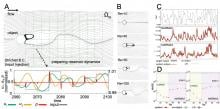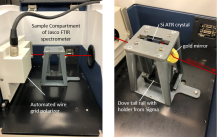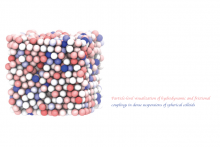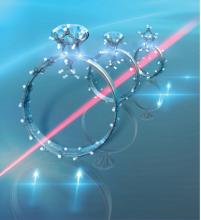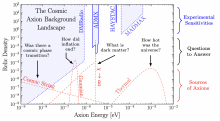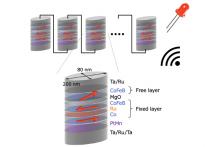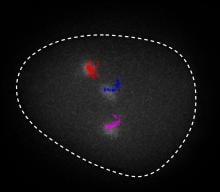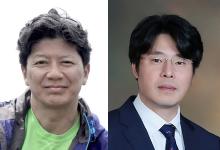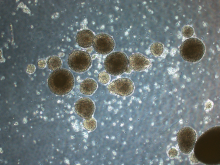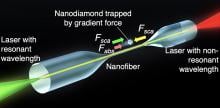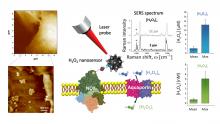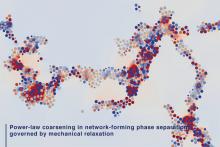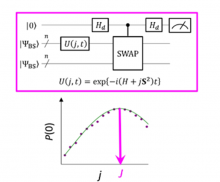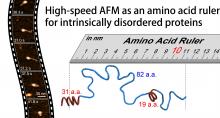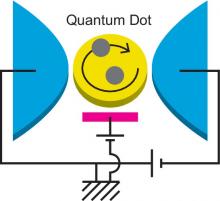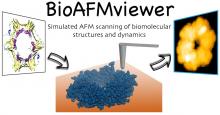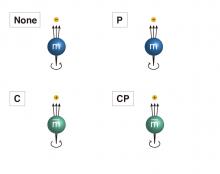Physics
News
23 Aug 2021
Magnesium rechargeable batteries show immense promise for a greener future because of their energy density, safety, and cost. But the lack of high-performance cathode materials has impeded their development. Now, a research team has developed liquid-sulfur/sulfide composite cathodes that enable high-rate magnesium batteries.
19 Jul 2021
Researchers from The University of Tokyo Institute of Industrial Science report a machine learning-based model for predicting the bonding properties of materials
07 Jul 2021
A new laser that generates quantum particles can recycle lost energy for highly efficient, low threshold laser applications
05 Jul 2021
Osaka Prefecture University develops a method to design and control the path of electron flow in a polycrystalline material. Using epitaxial growth approach, researchers address the electrical conductivity problem of thin film materials by realizing a highly conductive in-plane orientation of a metal-organic framework. Furthermore, they show that it is possible to fabricate oriented thin film patterns by integration with UV lithography technology.
21 Jun 2021
By virtually reproducing physical reservoir computing, a new information processing technology, using numerical simulation, the present study reveals that vortices in fluid flow phenomena in the downstream region of a cylinder are the key to information processing capability. It is expected that this result concerning fluid flow vortices and information processing capability will be useful in enhancing the information processing capability of the physical reservoir using fluid flow.
17 Jun 2021
Researchers at Osaka Prefecture University have established an approach to identify the orientation of molecules and chemical bonds in crystalline organic-inorganic hybrid thin films deposited on substrates using Fourier transform infrared spectroscopy (FT-IR) and polarized infrared light with a 3D-printed attenuated total reflectance (ATR) unit. This inexpensive method with laboratory-grade equipment quickly reaches the crystal-structure model of even extremely thin films of less than 10 nm.
16 Jun 2021
Researchers from The University of Tokyo Institute of Industrial Science report colloidal spheres that can be used to determine the rotational dynamics of dense suspensions
09 Jun 2021
Chemical rings of carbon and hydrogen atoms curve to form relatively stable structures capable of conducting electricity and more — but how do these curved systems change when new components are introduced? Researchers based in Japan found that, with just a few sub-atomic additions, the properties can pivot to vary system states and behaviors, as demonstrated through a new synthesized chemical compound.
08 Jun 2021
No one knows what happened in the Universe for its first 400,000 years, but a new paper suggests discovering the hypothetical particle axion could shed light on the early history of the Universe. What's more, current dark matter experiments may have already detected it in its data.
02 Jun 2021
A new nanometer-scale proximity labeling system can target histidine residues quicker than conventional methods thanks to the inorganic chemical singlet oxygen. The discovery generates a new chemical tool in protein chemical modification.
19 May 2021
Researchers at the National University of Singapore and Tohoku University have demonstrated that an array of electrically connected spintronic devices can harvest a 2.4 GHz wireless signal, which can be used to power and charge small electronic devices and sensors.
14 May 2021
Researchers have observed DNA spooling and unspooling in real time using CRISPR to attach fluorescent tags to very specific DNA points in living cells.
12 May 2021
Printing electronic circuits could soon get easier and cheaper.
14 Apr 2021
Prof. June.M. Kwak, and Prof. Chang-Hee Cho are selected for the research funds granted by Samsung Science & Technology Foundation

14 Apr 2021
In the era of Artificial Intelligence (AI), a novel optical “micro-comb” chip developed by a physicist from the City University of Hong Kong (CityU) has played a pivotal role in building the fastest optical neural network processor. An international research team has recently demonstrated the world’s fastest and most powerful optical neural network processor, which is capable of operating at faster than 10 trillion operations per second. When applied to handwritten digital recognition, a common benchmark in AI, it achieved an accuracy of nearly 90%. It represents an enormous leap forward for neural networks and neuromorphic processing.
02 Apr 2021
A study by KAIST researchers revealed that an ionized gas jet blowing onto water, also known as a ‘plasma jet’, produces a more stable interaction with the water’s surface compared to a neutral gas jet. This finding reported in the April 1 issue of Nature will help improve the scientific understanding of plasma-liquid interactions and their practical applications in a wide range of industrial fields in which fluid control technology is used, including biomedical engineering, chemical production, and agriculture and food engineering.
29 Mar 2021
A hydrogel, a type of soft matter, developed at Hokkaido University successfully reverted cancer cells back to cancer stem cells within 24 hours, in six different human cancer types. This could lead to the development of anti-cancer stem cell drugs and personalized medicines.
29 Mar 2021
A paper by the Kavli Institute for the Physics and Mathematics of the Universe (Kavli IPMU) Director Ooguri Hirosi and Project Researcher Matthew Dodelson on the string theoretical effects outside the black hole photon sphere has been selected for the “Editors’ Suggestion” of the journal Physical Review D. Their paper was published on March 24, 2021.
26 Mar 2021
Scientists have developed a method to use lasers to control the movement of nanodiamonds with fluorescent centers.
17 Mar 2021
Researchers improve their newly established quantum algorithm, bringing it to one-tenth the computational cost of Quantum Phase Estimation, and use it to directly calculate the vertical ionization energies of light atoms and molecules such as CO, O2, CN, F2, H2O, NH3 within 0.1 electron volts of precision.
08 Mar 2021
Researchers at Kanazawa University report in Biosensors and Bioelectronics a successful test of a sensor for measuring hydrogen peroxide concentrations near cell membranes. The sensor has the potential to become a tool for new cancer therapies.
08 Mar 2021
What is the origin of black holes and how is that question connected with another mystery, the nature of dark matter? Dark matter comprises the majority of matter in the Universe, but its nature remains unknown.
16 Feb 2021
Holger F. Hofmann, professor in the Graduate School of Advanced Science and Engineering, Hiroshima University, published a method to experimentally demonstrate the precision of quantum measurements on Feb. 3 in Physical Review Research. His work has implications for our fundamental understanding of physics at the level of individual quantum objects.
10 Feb 2021
Researchers at The University of Tokyo discover a new law about how the complex network of phase-separated structures grows with time, which may lead to more efficient batteries and industrial catalysts
18 Jan 2021
Researchers at Osaka City University use quantum superposition states and Bayesian inference to create a quantum algorithm, easily executable on quantum computers, that accurately and directly calculates energy differences between the electronic ground and excited spin states of molecular systems in polynomial time.
08 Jan 2021
Diamond is the hardest material in nature. But out of many expectations, it also has great potential as an excellent electronic material. A joint research team led by City University of Hong Kong (CityU) has demonstrated for the first time the large, uniform tensile elastic straining of microfabricated diamond arrays through the nanomechanical approach. Their findings have shown the potential of strained diamonds as prime candidates for advanced functional devices in microelectronics, photonics, and quantum information technologies.
28 Dec 2020
Kanazawa University’s pioneering high-speed atomic force microscope technology has now shed light on the structure and dynamics of some of life’s most ubiquitous and inscrutable molecules – intrinsically disordered proteins. The study is reported in Nature Nanotechnology.
23 Dec 2020
Osaka City University scientists have developed mathematical formulas to describe the current and fluctuations of strongly correlated electrons in quantum dots. Their theoretical predictions could soon be tested experimentally.
22 Dec 2020
Atomic force microscopy (AFM) allows to obtain images and movies showing proteins at work, however with limited resolution. The developed BioAFMviewer software opens the opportunity to use the enormous amount of available high-resolution protein data to better understand experiments. Within an interactive interface with rich functionality, the BioAFMviewer computationally emulates tip-scanning of any biomolecular structure to generate simulated AFM graphics and movies. They greatly help in the interpretation of e.g., high-speed AFM observations.
21 Dec 2020
In the 1970s, physicists uncovered a problem with the Standard Model of particle physics—the theory that describes three of the four fundamental forces of nature (electromagnetic, weak, and strong interactions; the fourth is gravity). They found that, while the theory predicts that a symmetry between particles and forces in our Universe and a mirror version should be broken, the experiments say otherwise. This mismatch between theory and observations is dubbed “the Strong CP problem”—CP stands for Charge+Parity. What is the CP problem, and why has it puzzled scientists for almost half a century?
Events
Sorry, nothing coming up for this discipline
Researchers
Sorry, nothing coming up for this discipline
Giants in history
Sorry, nothing coming up for this discipline






